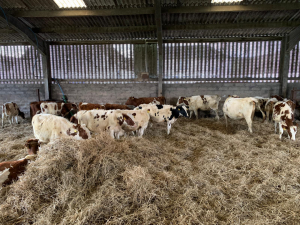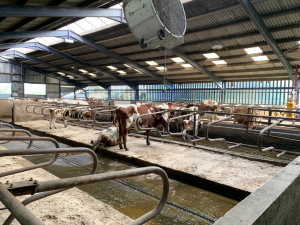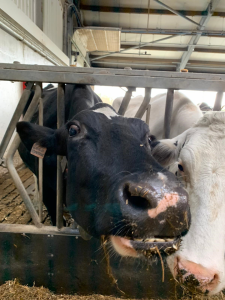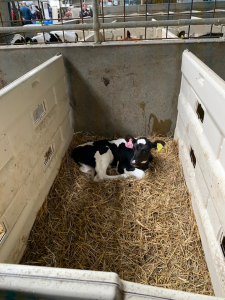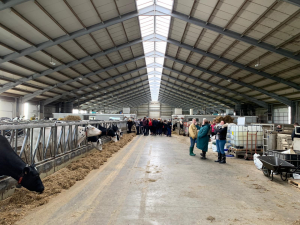I have been volunteering with a Rainbow unit in Ayr since the start of the term. Before that I have volunteered with a Rainbow unit and a Guide unit in Livingston and have been involved in Girlguiding since I was five years old. Rainbows are the first section in Girlguiding. It is for girls aged …
Continue reading “Community Project: Rainbows”
I have been volunteering with a Rainbow unit in Ayr since the start of the term. Before that I have volunteered with a Rainbow unit and a
Guide unit in Livingston and have been involved in Girlguiding since I was five years old.
Rainbows are the first section in Girlguiding. It is for girls aged five to seven. They take part in different activities, trips and overnight adventures all based around the Girlguiding program and our promise:
“I promise that I will do my best, to be true to myself and develop my beliefs, to serve the Queen and my community, to help other people and to keep the Guide law.”
This is simplified for the Rainbows to:
“I promise that I will do my best to think about my beliefs and to be kind and helpful.”
(Girlguiding, 2019)
The most surprising thing I found at this unit was how big it was. The unit has been split into two and has up to 20 girls in each sections. The sections run back to back so we can have up to 40 girls in a night. We run this with two leaders and two young leaders. This also presents several challenges as we have a very small space in which to work and controlling girls who like to run around screaming can be very challenging. We try to overcome this by working with the girls in small groups when doing the activities.
Another challenge I have faced is learning about the new program that has been implemented in Girlguiding. I took a year out from Guiding when I came to university so did not receive any training for the new program, therefore I am having to learn how the program works and the new way in which the girls are earning badges and awards.
Despite these challenges I absolutely love working with the girls. It is one of the reasons I decided to become a primary teacher. I love being able to work with them and teach them new skills. To be able to see girls walk out with a smile on their faces that they didn’t come in with is really amazing to see.
The girls all come from different schools and different backgrounds but they all come together once a week to work and play together. In doing this they are able to create their own community within Rainbows. Rainbows also take part in wider community events. Recently the rainbows took part in the Remembrance day service at the church we meet in. Rainbow units could also look after community flower or vegetable plots, help with toy appeals or visit care homes.
Girlguiding within itself is a community made up of “50,000 young members” and “11,500” volunteers in Scotland alone (Girlguiding Scotland, n.d.). This, however, is just one country if we look at our worldwide community – who all come together under the name of the World Association of Girl Guides and Girl Scouts (WAGGGS) – we have 150 countries and 10 million members all over the globe ( World Association of Girl Guides and Girl Scouts, n.d. and Girlguiding Scotland, n.d.). This is something that I find amazing that 10 million girls and women can be connected by one single organisation which has commons goals and outlooks. Being part of girlguiding has allowed me to meet and become friends with people from across the country and around the world. It is through this community that I was able to start up with another Rainbow unit in another town.
Within Rainbows I have been able to build my confidence when controlling a group of children. I have also developed my communication skills with parents, children and with other volunteers. These are essential skills in teaching as communication and control are paramount in the classroom. I’ve also been able to develop my confidence in being able to keep this age group focussed on tasks – another thing that is vital in the classroom. As I continue to volunteer I feel that my skills in communicating and engaging children will improve. I also feel that I will be able to transfer the experiences of learning through play from Rainbows into the classroom.
Many of the activities that are in the Rainbow program have to be adapted to suit the venue, resources and the type of girls we have. This would be similar to the differentiation that has to be done in a classroom. This sometimes has to be done very quickly with no prior planning because of changing circumstances. This skill will help in my development as a teacher in a ever changing environment.
Volunteering with the Rainbows links with Sustainable Development through the badges that focus on looking after the planet and looking after the community. Girlguiding’s (2019) “#PlasticPromise” that is a pledge to reduce single-use plastic.
Rainbows also links to Interprofessional Working because as a Rainbow leader I need to work with other leaders and young leaders, district commissioners, county commissioners, parents, other organisations and the church minister. This requires good communication skills and the ability to work well as a team.
References
Girlguiding (2019) Girlguiding launches #PlasticPromise, the biggest ever girl-led campaign to tackle plastic pollution [Online] Available: https://www.girlguiding.org.uk/what-we-do/our-stories-and-news/news/girlguiding-launches-plastic-promise/ [Accessed: 25 November 2019]
Girlguiding (2019) The Promise [Online] Available: https://www.girlguiding.org.uk/about-us/what-makes-guiding-special/the-promise/ [Accessed: 25 November 2019]
Girlguiding Scotland (n.d.) Facts and Figures [Online] Available: http://www.girlguidingscotland.org.uk/what-we-say/press-and-media/facts-and-figures/ [Accessed: 25 November 2019]
Girlguiding Scotland (n.d.) Rainbows (age 5 – 7) [Online] Available: http://www.girlguidingscotland.org.uk/who-we-are/what-girls-can-do/rainbows/ [Accessed 25 November 2019]
World Association of Girl Guides and Girl Scouts (n.d.) Membership [Online] Available: https://www.wagggs.org/en/about-us/membership/ [Accessed: 25 November 2019]

